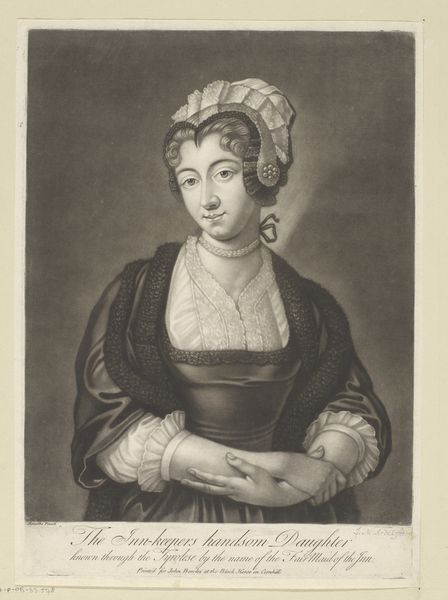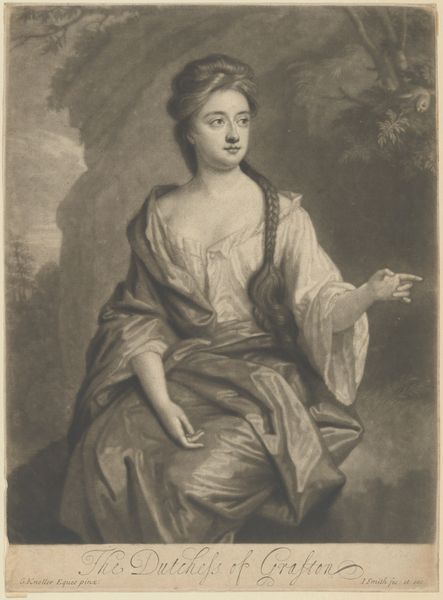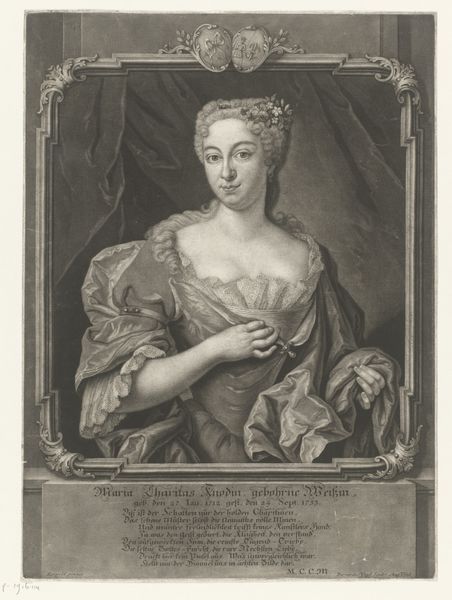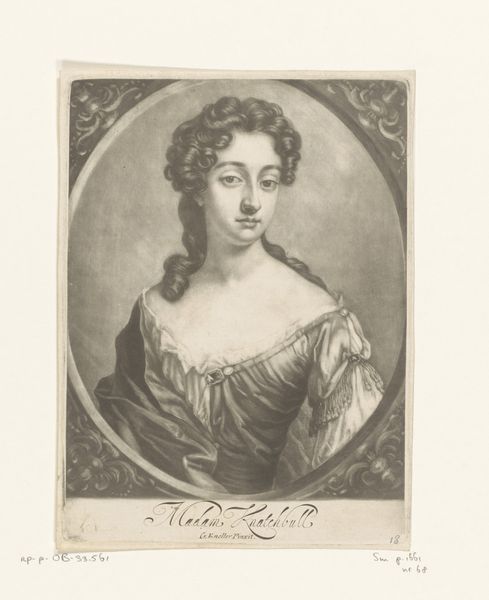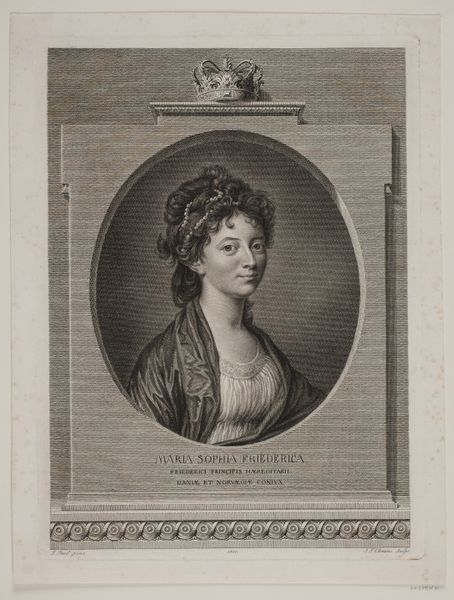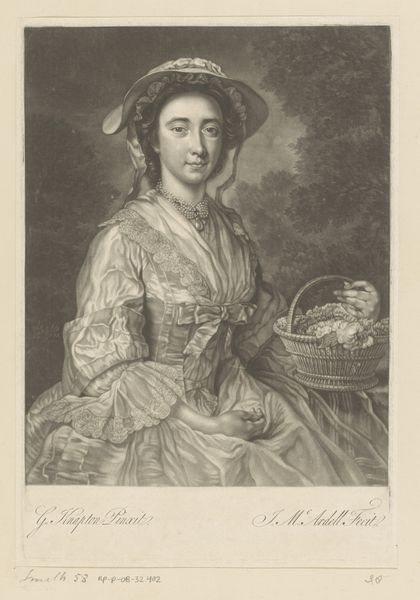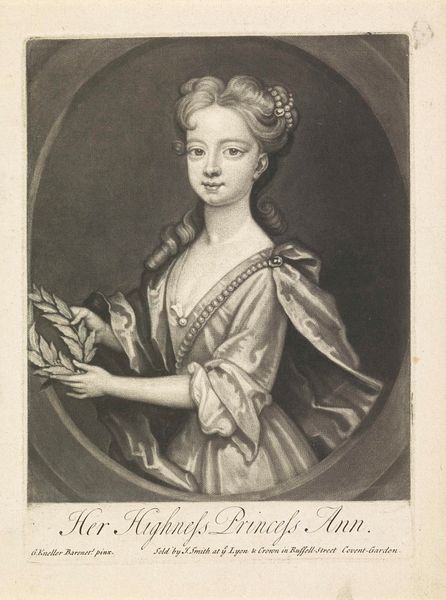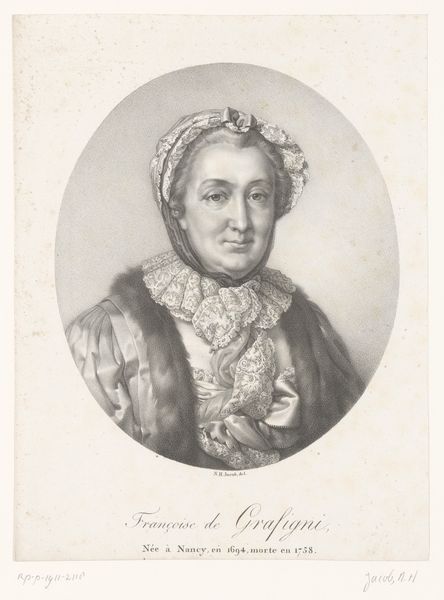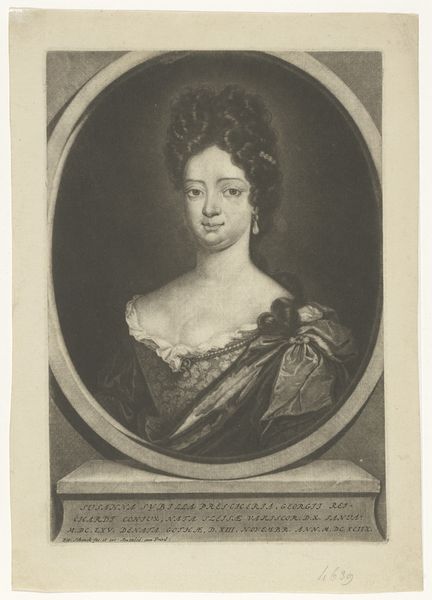
print, paper, engraving
#
portrait
# print
#
caricature
#
paper
#
framed image
#
engraving
#
rococo
Dimensions: height 321 mm, width 227 mm
Copyright: Rijks Museum: Open Domain
Curator: Before us is “Portrait of Hannah Pritchard,” an engraving created between 1762 and 1764 by James McArdell. Editor: My first impression is one of quiet opulence. The textures in the rendering of her fur stole and satin dress are beautifully realized through the monochromatic engraving. Curator: Indeed, the print's rococo style is apparent in the swirling, elegant lines. Let’s consider the framing device: that oval vignette concentrates the viewer's eye, forcing a deep inspection of the face and her posture. Editor: I’m particularly drawn to the book she’s holding. The book serves as a key symbol; considering Pritchard was a celebrated stage actress, perhaps it points to the scripts she used or a broader commentary on her intellectual life, in addition to her performance persona. Curator: An excellent point. It creates a compositional balance, mirroring the curve of the oval surrounding her face and directing the eye towards the subtle gradations of tone. Notice how McArdell contrasts the soft luminosity of her face against the darker tones of the background. Editor: And the fur stole draped so deliberately? That reads as a symbol of wealth, but also protection – perhaps of her own carefully constructed image and professional role within theatrical culture. Pearls and lace also amplify the visual emphasis on elegance. Curator: We must remember how portraiture, particularly engravings, served to disseminate images widely in the 18th century. The choice of details—the fur, jewelry, the very presentation—was meticulously planned. Editor: Which highlights the negotiation between public image and private identity—something Hannah Pritchard certainly navigated professionally. Looking at this, I ponder the artist’s intentions, what details are true versus embellishments that suited 18th century expectations. Curator: Reflecting on it, it shows a restrained command of light and shadow which builds up and directs our gaze while simultaneously revealing wider societal considerations, power and femininity during the era. Editor: Absolutely; her carefully considered adornments serve as a quiet mirror, subtly reflecting social and psychological dimensions during the golden age of theater.
Comments
No comments
Be the first to comment and join the conversation on the ultimate creative platform.
